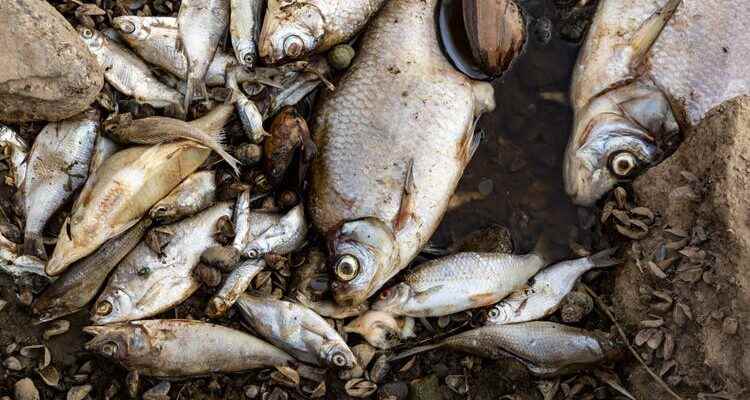The Oder is a synonym for the border between Poland and Germany. Tons of dead fish are now floating there – an environmental catastrophe that casts a bad light on Polish-German cooperation.
Not only fish died in the Oder, dead snails and mussels were also washed up on the banks.
“The border between Poland and Germany, as it runs today, is final.” With these words, the reunified Germany declared in 1990 that it would recognize the Oder and the Lusatian Neisse as the border between Germany and Poland. From 1945 onwards, the so-called Oder-Neisse border was almost synonymous with the post-war order in Europe.
Today, with borders no longer playing a role in the European Union, rivers are more about bringing people together than separating them. But for a few days now, tons of dead fish have been floating in the Oder. It is a catastrophe for nature – which also casts a very bad light on Polish-German cooperation.
According to the German side, the Polish authorities informed them too late about the danger. In Poland, according to government information, there were indications as early as the end of June that there were masses of dead fish floating in the Oder. Also in July, Polish anglers are said to have noticed numerous dead animals near Wroclaw. This information only arrived in Germany last week, when the first cadavers were found there.
By then it was already too late. Over the past few days, helpers have pulled several tons of dead fish out of the Oder, and mussels and snails have also washed up on the banks. “It seems that everything that breathes air from the water has died,” said an employee of the landscape conservation office in Frankfurt to the “Spiegel”.
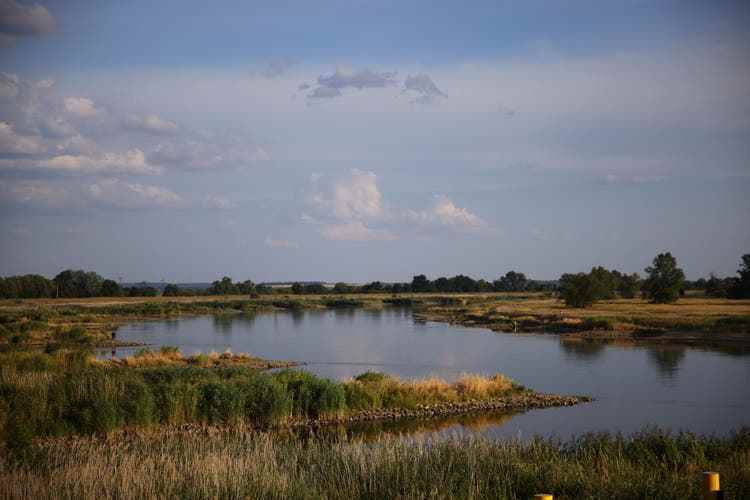
There is usually a great diversity of species on the banks of the Oder.
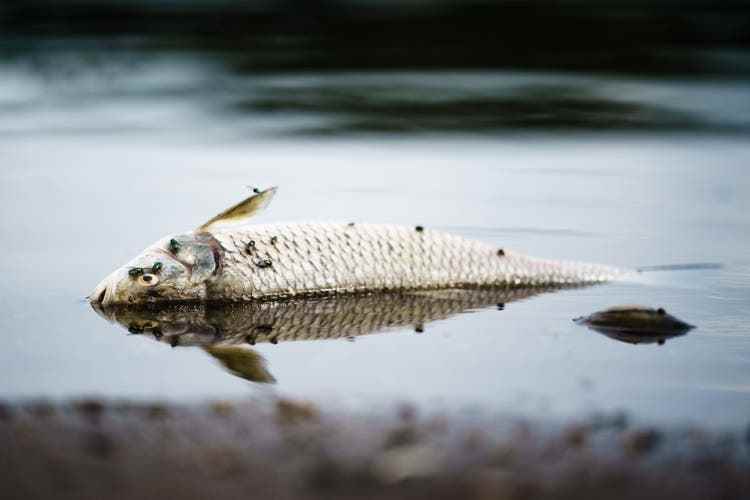
Dead fish float belly up on the shore.
The cause is still unclear
German and Polish laboratories are still trying to find out why. The suspicion of mercury was temporarily in the room. But although traces of it have been found in the carcasses, the toxic substance is unlikely to be the cause of the mass deaths. The values are not particularly high, said the Brandenburg Ministry of the Environment on Tuesday.
The Polish laboratories are now looking for 300 substances that could be considered, said Brandenburg’s Environment Minister Axel Vogel (Greens). “It may well be that these are substances that have been introduced into the Oder for a long time, but normally do not pose a problem at all with medium water.” However, there are currently historical low water levels, which means that every substance in the water is present in a higher concentration. Thus, substances that are normally not so serious could become dangerous due to the increased dose.
Among other things, it is checked whether an increased salt content in the water is related to the fish kill. According to the Ministry of the Environment, both the salt and the oxygen content of the water are exceptionally high. The Polish government suspects that a huge amount of chemical waste may have been dumped into the Oder. Poland offered a reward of more than 200,000 euros to clarify the fish kill.
Allegations against Polish paper mill
The Polish daily Gazeta Wyborcza made serious allegations against a paper factory south-east of Wroclaw. Local residents informed the local environmental authorities in March that toxic waste water from the company had been flushed directly into the river, according to the newspaper. But although the topic allegedly also played a role in the city council, nothing has changed. The company’s CEO denied the allegations to the newspaper.
In the meantime, masses of carcasses are being taken out of the water in both countries: zander, catfish, gudgeon and wolffish are drifting belly-up onto the banks. Most of the fish are already washed up on the shore in Poland, and the fire brigade had pulled almost a hundred tons out of the water by Tuesday. Authorities spread red barriers on the water over the weekend, in front of which a carpet of dead animals formed.
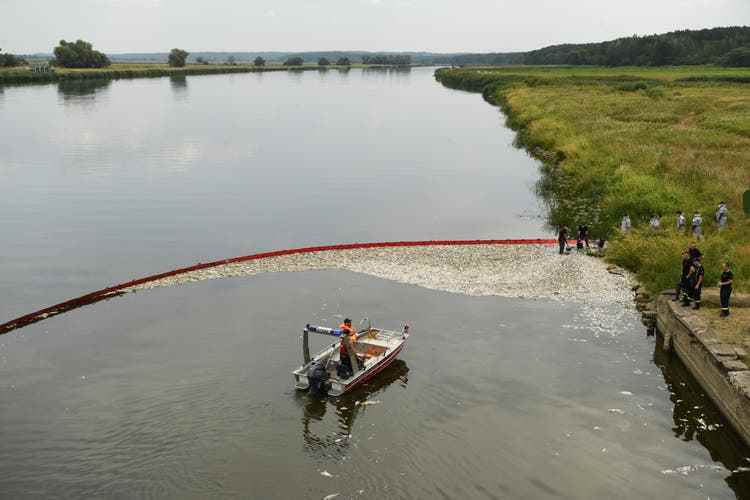
They are images reminiscent of an oil spill: a carpet of dead animals is forming on the Polish bank of the Oder.
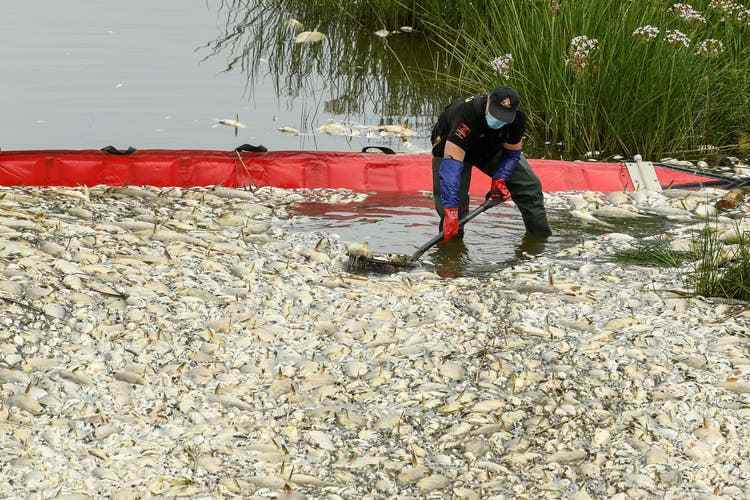
Helpers use shovels to get the carcasses out of the water.
The only damage limitation left to the authorities last week was the closure of the bulkheads on the Oder’s side arms. There is hope that ecologically valuable tributaries will be spared from the toxin wave. At Schwedt, the sluices have been stopped so that the harmful substances cannot get any further into the Havel.
But the way of the Oder into the sea can no longer be stopped. So far no carcasses have been found in the Szczecin Lagoon, where the river flows into the Baltic Sea. But until that happens, it is probably only a question of a short time: Polish authorities announced on Tuesday that dead fish had appeared in canals south of Szczecin. This means that the poisoned water masses are moving towards the Baltic Sea.
Cooperation should be improved
“The German-Polish cooperation obviously didn’t work at this point,” said German Environment Minister Steffi Lemke during a visit to Poland at the weekend. Poland’s government also acknowledged that information was not shared within the country. On Friday evening, Prime Minister Mateusz Morawiecki therefore dismissed the heads of the water authority and the environmental authority. It was said that he only found out about the massive fish kill on Wednesday.
Now the cooperation between the countries is to be strengthened: On Sunday evening German and Polish government representatives met in Szczecin for consultations. With a joint task force, they now want to counteract the fish kill. Experts from both countries are to work closely to determine the causes and develop the necessary measures, as the Federal Environment Ministry announced on Monday.
But not only Poland is criticized. Frankfurt’s Lord Mayor René Wilke also made allegations against the German government. The federal and state governments did not help, the city had to set up its own crisis management. Brandenburg’s Prime Minister Dietmar Woidke (SPD) got an idea of the situation in the small town of Lebus on Monday. There, too, emergency services had recovered large quantities of dead fish over the weekend.
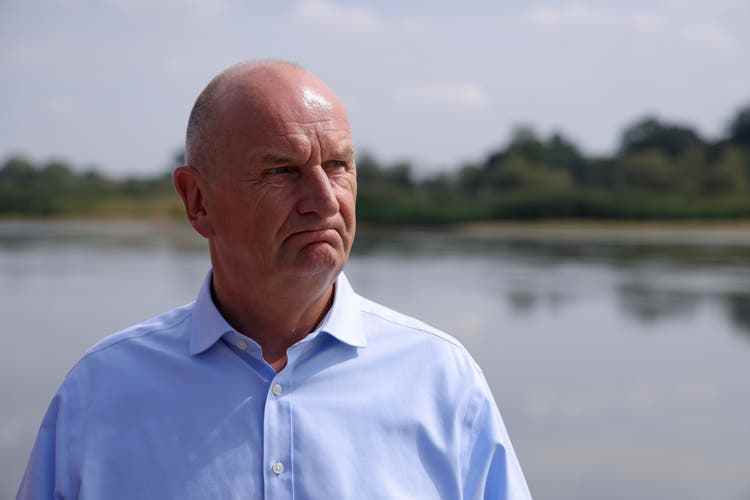
Dietmar Woidke visits the small town of Lebus on Monday.
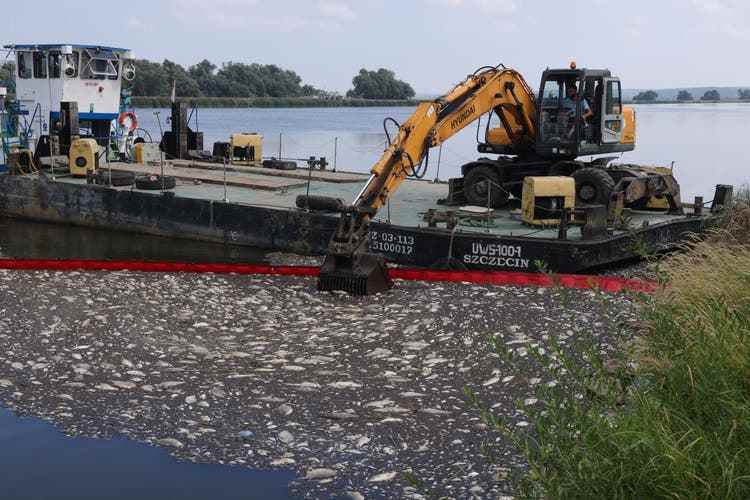
In Poland, meanwhile, excavators are being used to cope with the volumes.
Conservationists expect far-reaching consequences
After all, the acute wave of poisoning is apparently over, said Brandenburg’s Environment Minister Axel Vogel. In the meantime, many small fish have swum in again. But dying will probably not stop on the banks of the Oder. The otters, white-tailed eagles and cranes could also perish if they eat poisoned fish or find nothing left to eat.
For the Lower Oder Valley National Park, one of the most species-rich areas in Germany, conservationists expect far-reaching consequences. The Schwedt Mayor Annekathrin Hoppe speaks of an “environmental disaster of unprecedented proportions”. Tourism, as well as grazing and fishing, are also severely affected. Environment Minister Vogel also assumes that the consequences of the disaster will be felt for a long time. “For the Oder as an ecologically valuable body of water, this is a blow from which it will probably not recover for several years.”
